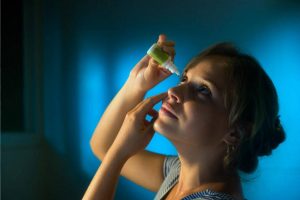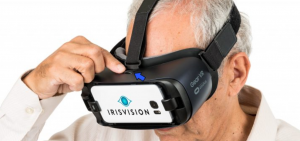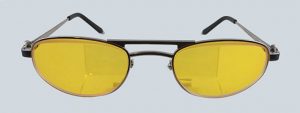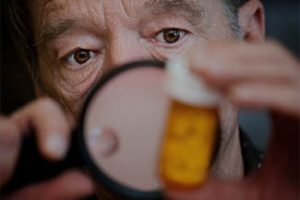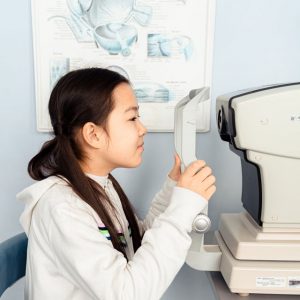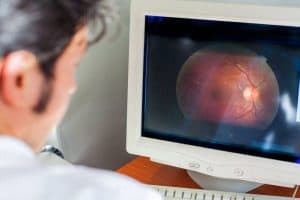Can Eye Drops Be Overused?
Overusing eye drops can cause more harm than good. Do you find yourself constantly reaching for eye drops? While eye drops may provide satisfying and
Read MoreOrCam for Low Vision
OrCam is a revolutionary device allowing those with low vision to reconnect to the world like never before. Low vision is a permanent visual impairment
Read MoreIrisVision for Low Vision
If you suffer with vision loss, this wireless virtual reality device may allow you to regain your quality of life. While low vision can’t be
Read MoreE-Scoop Glasses for Low Vision
Approximately 4 million Americans live with low vision. Low vision is visual impairment that can’t be corrected with glasses, contact lenses, surgery or medication. However,
Read MoreRetinitis Pigmentosa and Low Vision
An estimated 1 in 4,000 people are affected by retinitis pigmentosa (RP). Retinitis pigmentosa is an inherited eye disease that causes a breakdown and loss of cells in the retina. The most common symptoms of RP include decreased peripheral vision, trouble seeing at sunset and night or colors appearing washed out. While there is no cure for most causes of RP, it can be managed effectively with the help of a low vision eye doctor
Read MoreAlbinism and Low Vision
Albinism affects at least 1 in 20,000 of the population. Ocular albinism affects the eyes, possibly causing dramatic loss of visual function and impact on the quality of life.
Read MoreHemianopsia and Low Vision
A brain injury can cause the loss of over 50% of your visual field, this is known as hemianopsia. Males from the ages of 50 to 70 are most frequently affected by this condition. Over 70% hemianopsias are caused by a blockage of the blood supply in the brain, most frequently due to a tumor or stroke.
Read MoreReading Tips For People With Low Vision
Approximately 3.22 million people in the United States have a visual impairment. For people with a visual impairment, reading is often one of the most
Read MoreTop Home Tips for Low Vision
One in six adults over age of 45 and one in four adults over age 75 has low vision. Having low vision – reduced vision that can’t be improved with glasses, contact lenses, medication or surgery – can make it difficult to perform day-to-day tasks. Fortunately, there are many things a person with low vision can do to remain independent and do the things they enjoy and love.
Read MoreWhat Causes Low Vision In Children?
More than half a million children in North America are blind or have low vision. Having impaired vision makes it difficult to read, play sports,
Read MoreWhat to Look For in a Low Vision Magnifier?
Asking yourself these questions before deciding on a low vision device to ensure you will gain from your low vision aid. Experiencing life with low
Read MoreGuide to Low Vision Devices
With the large variety of low vision devices now available on the market, our guide will help you choose a magnifier that best suits your
Read MoreLow Vision In Children
Many children suffer with vision loss, but there are a range of low vision aids that can give them the best chance to engage with the world around them. There are a number of conditions that can cause vision impairments in children. While some of these conditions can be treated in early childhood, many can result in low vision or even total blindness.
Read MoreWhat Are Side Vision Glasses?
Side-vision awareness glasses are an effective low vision device that increases the viewing field for people suffering from side vision loss. Side vision awareness glasses
Read MoreCoping with Macular Degeneration
Over 40% of people diagnosed with macular degeneration suffer from depression. Macular degeneration, also known as age-related macular degeneration (AMD), is a progressive eye disease
Read MoreIs It Safe to Drive With Macular Degeneration?
Central vision loss from macular degeneration (AMD) can significantly affect your daily functioning, including your ability to drive. Macular degeneration, also known as age-related macular
Read MoreUsing a Smartphone for Low Vision
There are no limits to what you can do with a smartphone nowadays, even if you have low vision. Smartphones, with their advanced technology and
Read MoreRetinitis Pigmentosa
Retinitis pigmentosa is one of the most frequently occurring forms of inherited retinal degeneration, affecting around 1 in 4,000 people, worldwide. What is Retinitis Pigmentosa?
Read MoreTop 10 Tips for Improving Low Vision at Home
Follow these 10 tips to increase your independence at home, for even the simplest of activities. Low vision can significantly impact your daily functioning. Here
Read MoreWhat Is Charles Bonnet Syndrome?
Charles Bonnet Syndrome affects up to 40 percent of people with low vision. Charles Bonnet Syndrome (CBS) typically develops in the weeks and months following
Read MoreWet Macular Degeneration (AMD)
Wet AMD accounts for approximately 10 percent of all AMD cases, but is responsible for 90 percent of legal blindness. Wet AMD develops as a result of abnormal blood vessels that form under the retina, and leak blood and fluid into the macula. Wet AMD is the more advanced stage of AMD, with dry AMD usually preceding it.
Read MoreDry Macular Degeneration (AMD)
Dry AMD accounts for 80-90 percent of all AMD cases. Macular degeneration, also known as age-related macular degeneration (AMD), is an eye disease that occurs as a result of permanent damage to the macula, the center of the retina. Dry AMD causes loss of central vision and the ability to see fine details
Read MoreWhat is Macular Degeneration?
Have you been diagnosed with macular degeneration? Macular degeneration (AMD) is an ocular disease caused by deterioration of the macula, the center of the retina that controls your visual acuity. Macular degeneration accounts for 8.7 percent of all blindness worldwide, and is one of the leading causes of blindness in adults over the age of 60.
Read MoreShould I See an Optometrist or Ophthalmologist?
Your eye care team Ophthalmologists, optometrists and opticians are the three main professionals included on the ‘eye care team’. While each profession plays an important
Read More
